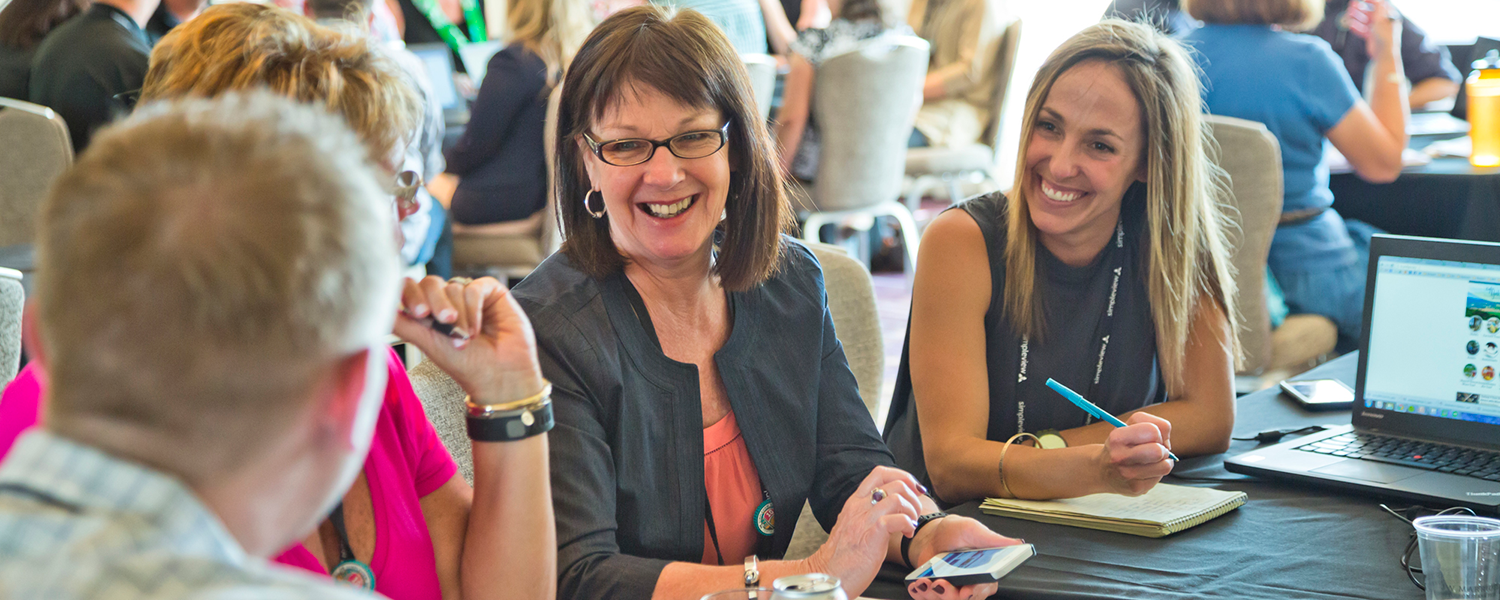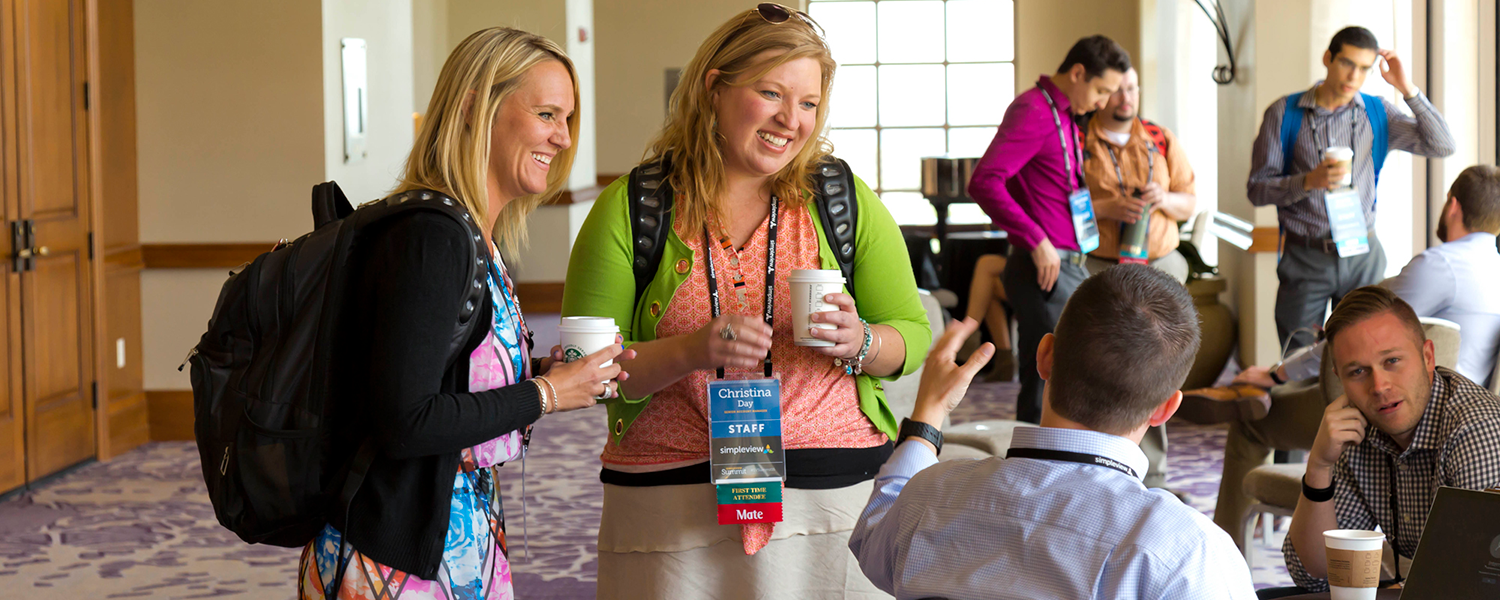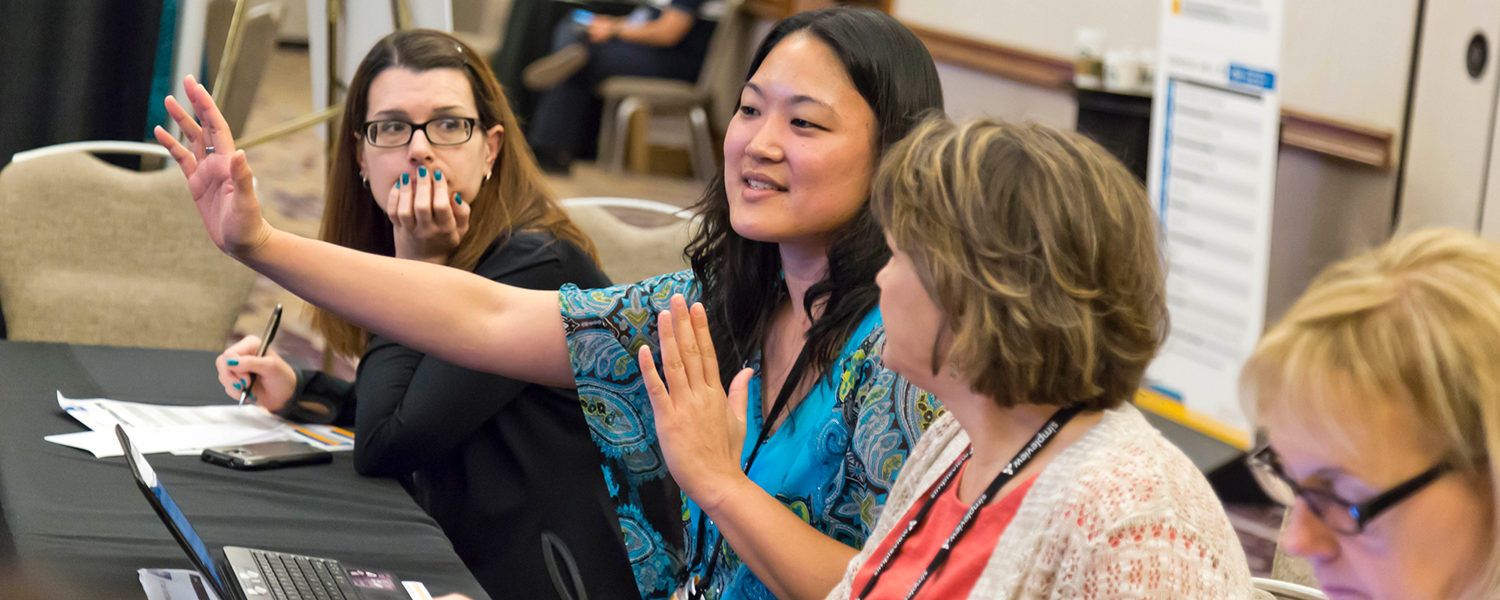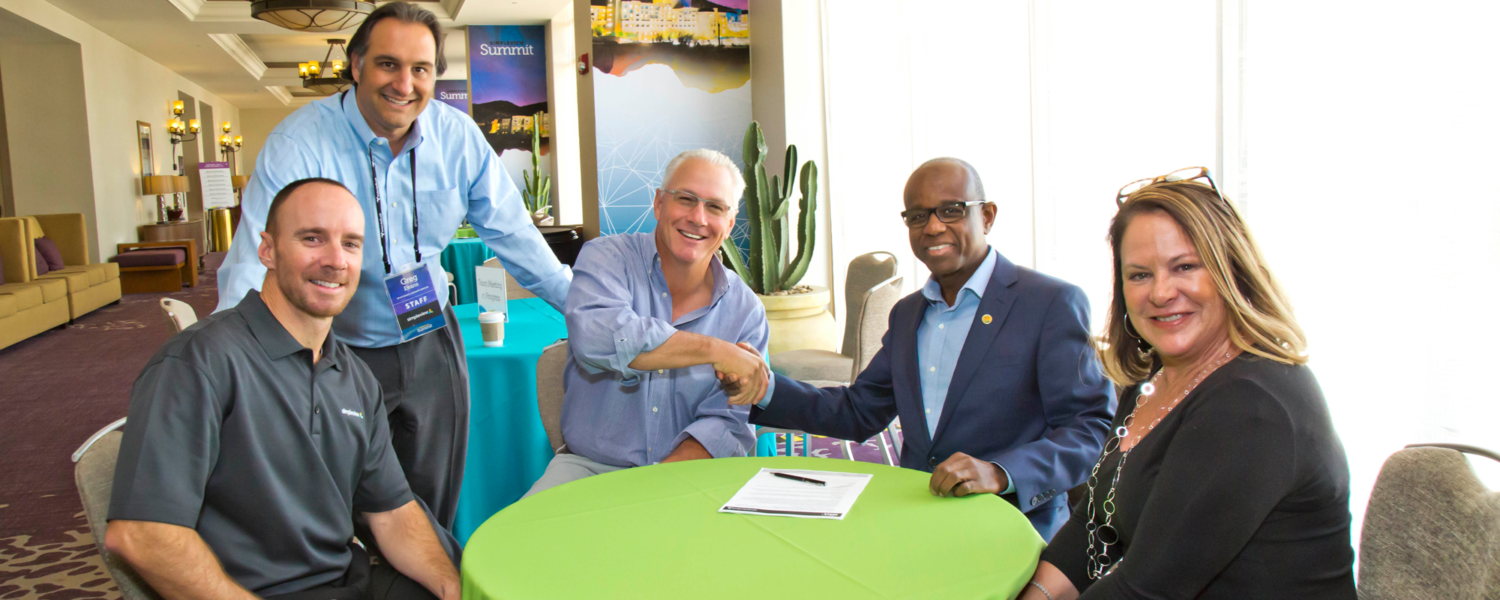Greg Evans
Episode 45: Helping DMOs Deliver the Right Message at the Right Time, with Greg Evans
In this episode, you will learn about how DMOs can band together to come up with great ideas to serve their partners from Greg Evans.
Greg Evans has been with Simpleview since 2008 and currently serves as their Vice President of Sales & Account Services. In his role, he provides strategic insight and recommendations for his teams when providing knowledge and best practices to current and prospective clients. He has nearly twenty years of corporate sales and account management experience, having worked for technology-forward corporations such as MCI Worldcom and Iron Mountain.
More on Greg’s Background
Thank you so much for joining me, Greg.
Oh, thank you, Nicole. Happy to be here.
I am really excited about our conversation today, but before we dive into our questions, could you tell us a little bit more about your background and your story?
Yeah, sure. I guess I’ll start with I’m a Tucson native, where Simpleview happens to be headquartered. I have refused to leave this town to the angst of my own wife, but she now loves Tucson, so that’s good. I went to the University of Arizona, and, as you mentioned, worked for MCI WorldCom and Iron Mountain right out of college, so I really was kind of thrown right into two large Fortune 500 companies right out of college doing sales, primarily technical sales, which has always been something I’ve gravitated to. I think to go through that process of working for the bigger companies, both being able to learn from the corporate experience, their sales universities and sales training created a very strong foundation for me on how to interact with customers, but also because I was in Tucson I was many times kind of the smaller market compared to say a Phoenix or an LA for Iron Mountain or MCI WorldCom, so while I was selling I was also usually account management, too.
So, my foundation was really founded in, “Hey, you can’t just sell something and move on, but you really have to take care of the customer, both on the front end and the back end,” and so I think that’s a big part of kind of where my successes come from and my appreciation of where the customer comes from is from that experience back in the day.
I think that’s really cool. I can relate to you being a Tucson native — I’m a Rochester, New York, native and we’ve got that smaller market complex as well. We’ve got that New York City down there in the south of the state, so I can appreciate how people perceive these smaller markets. I know a lot happens in small markets and there’s a lot of innovation there. I think that’s really, really cool that you found your way through technical sales to Simpleview, which is really focused on destination marketing in particular. The other kind of connectivity as I was listening to you that I was thinking about when you talked about the sales training and the sales universities — I think that’s just a really interesting background especially working with destinations because you have that sales background. It’s not just about B2B, it’s also about nurturing relationships and the leisure traveler and all the things that the Simpleview websites do to help destinations. I’m really interested in hearing your perspective as we move through these questions.
Yeah, I mean, just to talk to Simpleview real quick, as you mentioned I’ve been there since 2008, which has been a quick ten years — a really fast ten years. It’s kind of crazy to think about, but when I was hired, Simpleview had about 25 employees and our founder, Ryan George was actually a customer of mine at MCI WorldCom, so he was a customer first and then kind of kept talking about this company that was working with tourism and CVBs, and I didn’t know what a CVB was. But every year what he told me they were gonna do, they did and then some, and so finally I kind of took a gamble and moved over to Simpleview. I really haven’t looked back.
It’s been a phenomenal journey as we’ve grown, and, as you’ve said, kind of taking that corporate experience on the sales side and realizing that a lot of those rules don’t necessarily apply to the DMO space. CVBs are a unique business — it’s not as much selling as it is prescribing solutions and really talking through that with customers. Simpleview’s strength has been the industry knowledge that we bring working with so many different DMOs, so the charge that I brought was really bringing that, “Hey, if we’re gonna focus on this industry and we’re gonna be industry experts, we need to deliver that to our customers, not only just in the sales process, but also from a delivery perspective.”
I think that’s really awesome. Yeah, what a leap for you actually now that you’ve framed it that way, to go from a Fortune 500 company to a smaller startup-type company.
Yeah. I’m like, “So, where’s the marketing department? Yeah, who’s gonna create the proposals for me?” “Oh, we don’t have that.” “Oh, okay. Oh, I have to make that. Oh, okay, cool.” We did a lot of that, and it’s pretty funny — as I grew the sales team here to have sales people coming from different industries and going, “Hey, why don’t we have this? Why don’t we have that?” It’s like, “Hey, walk a mile in my shoes, man. We’re getting there,” so we’ve come quite a ways since then.
Yeah, absolutely. Just for our listeners’ sake, because I had the opportunity to talk to Ryan recently and learned just how much you’ve grown since then. Talk a little bit about where you are right now in terms of company, and what you offer, and the size of the company.
Sure. Yeah, we’re about 220 employees. We’re headquartered here in Tucson. We work with about 550 DMO customers primarily in North America, but over the last four or five years, we’ve been really growing in the international space. It’s all walks of life from a DMO size and budget, which has really given us a great perspective. We started out really with the smaller DMOs — our CRM platform is kind of our foundation product. It runs the entire back office of a CVB or DMO. We’ve kind of moved into some of the bigger DMOs, such as Las Vegas, or Chicago, Houston, you name it. One of our sayings here at Simpleview is that, “All CVBs are the same, but they’re entirely different,” and the reason we say that is they all have the same charge, which is to bring that customer — be it the leisure traveler, meeting delegate, meeting planner, travel trade, whatever it may be — and connect it to the local business.
That’s the charge from a Houston to a Paducah, Kentucky, and so our platforms are built to scale and to make those connections. Sometimes the best ideas come from the smaller DMOs that can’t throw bodies or money at a problem, they’ve got to make the system work ’cause they’ve got five staff and that’s just how it is. They’re usually the ones that are like, “Hey, why don’t we do this? Why can’t the system do that? We need it to do this for us,” and that really helps us push it — couple that with Chicago or Houston that’s able to maybe throw some money and some bodies at a problem to also help create some interesting perspective for us as an organization.

[bctt tweet=”“Sometimes the best ideas come from small DMOs without the resources for a problem.” – @dmologist #Podcast”]
That’s really interesting, too. You know what I kind of like about that? We’re gonna talk more about this as we get into these questions, but in a way, it’s like a collaborative platform that you’re building where you’re getting input from all different DMOs and they all benefit from each other’s input.
Yeah, absolutely. We have a saying here at Simpleview that, “The rising tide rises all boats,” and it’s a mentality that we share. Actually, right now as we speak, our CRM and CMS user groups are meeting in Grand Rapids, which is one of our customers, and those user group meetings happen three or four times a year — twice face-to-face — and it’s where our product teams sit down with a composition of DMOs large and small where our product teams are running ideas by them, and they’re sharing ideas and spit-balling their thoughts back with us and sharing their concerns. What that does is it just creates a great collaboration not only with us and our customers and really hearing their voice, but also for them to interact as peers and really talk with each other because all CVBs are the same, but entirely different.
They all have to get to the same place, but they all have different ways of doing it and that can be affected by political factors, the way their organization is run, if they’re a membership, if they’re leisure, or meetings. They’re able to really kind of share those experiences and I think they gain a lot from that. It’s an underpinning of our success, I think, is to really continue to listen to our customers.
Yeah, I think that’s great. What’s also really awesome about that is you’re bringing those folks together and they’re learning from each other — these user groups — and I know you do an annual conference as well. Here you are — you’re more than just a vendor. You’re more like a partner in this DMO space. I just think that that’s really unique, you don’t find that a lot, and that that’s just a really cool aspect of the company that you work for.
Yeah, thanks. We definitely think so. One of the things Ryan George always says is, “We’re industry specific on working with Convention Visitor Bureaus and DMOs, and so their success is our success,” and to be completely candid, as tourism marketing continues to go and as Google starts to encroach on our business, it’s always about proving relevance and what the CVB brings to a destination and everything that we do is around the idea of trying to help our DMOs prove their worth, which they’re all doing a great job, but building the systems to kind of track that and show that so we can help defend that for them.
Yeah, that’s really cool. That’s what I love about this industry — there are so many opportunities to network and learn from each other. It’s something that I call coopetition — just that whole idea of perceived competitors working together for the common good, or, as you said, a rising tide … or a high tide rises all boats, or however that goes — I always mess that one up.
I probably messed it up, too.
Yeah, but you get the picture.
The Simpleview Technology
We’ll circle back and talk more about collaboration a little bit, but I want to dive into some of these questions and in particular, we like to focus on creativity and collaboration on this podcast. We’ll start with a question around creativity and that is that the tourism and hospitality industry is very competitive, and I’m sure if we broaden that to the space that you’re in in terms of technology and the product development work that you do even more so probably. What have you done to stand out from the crowd?
Right. Well, if I was to answer the question, a lot of times someone will ask me, “Hey, Greg, who’s Simpleview’s biggest competitor?” And I’ll usually answer kind of tongue in cheek, but also pretty true, which is, “Our biggest competition is misinformation.” We’re in the world of technology — there’s just so much being talked about and there’s a lot of shiny objects that are flying around. So, that’s probably the biggest thing is I’m educating more than I am selling more often than not. When we started in 2001, we were a technology. We started out as interactive — we never started in the traditional space — and I believe as the traditional started to shift more to digital back in 2010, 2011 — and I think we can all admit that we’re fully there — we were already well positioned there. Our technology works, that’s where we’re strong.
We had to grow into becoming more creative and more interactive, if you will, and we added our creative resources, unlike a traditional agency that had to kind of relearn the whole thing and turn their kind of bigger, traditional ship around and become digital which I think is a much harder thing to do. One of the things that we bring to the table, I think, is the fact that our technology just works and it’s integrative, which is a big, big thing for us. That’s obviously our biggest contrast is everything that we build is integrated together so that you’re not dealing with silos or disparate databases and things like that. That’s really where I think the contrast in how we’ve separated ourselves in the industry is that our customers don’t have to worry about the technology working, they can worry about marketing their destinations.

[bctt tweet=”“Our customers don’t have to worry about our technology and can focus on marketing.” –
@dmologist #Podcast”]
Yeah, that’s great. I do think there’s something to that — starting in the digital space and not having to reinvent yourself because change is definitely hard especially when you have a larger organization as some companies probably in the traditional ad-space had to reinvent themselves. It’s harder to turn a ship around that’s got that big of a company, so I think that that’s a really great way to look at it.
One other thing I’ll add, Nicole, is just that I think it is technology, and so it’s gonna break, things are gonna change. It’s just the nature of technology, right? I always joke that technology is like dog years, if you look at a DMO website or any website, a one-year-old website looks like it’s seven-years-old. That’s just how fast everything goes. I think as long as you’re kind of staying ahead of the curve, but you’re in it for the long haul, and recognizing that you just treat your customers fair and try to stay on top of those things — that’s the key. It’s a challenging space, but it’s a lot of fun.
Staying on top of the technology is, I’m sure, a pain point for your customers. I know trying to stay ahead of the curve is very difficult. I’m going to divert from our question flow, but can you think of a couple things that are trending or some things that are kind of changing that you have your eye on right now?
Yeah. I’ll throw this out there, because we work with over 500 DMOs, and I think any listeners that are working on a DMO will appreciate, they get calls all the time from various companies selling this or that. My favorite one is the, “Hey, we’ve come up with a map product,” and it’s like, “Hey, have you heard of Google Maps? Kind of everyone uses that.” One of the challenges we have is we get a lot of people sent our way either through a trade show where we meet someone or our customer saying, “Hey, I just don’t really want to deal with this,” or, “I actually do like this, but, hey, everything’s integrated with Simpleview. We want you to talk to them.”
The reason I bring that up is that we take it very seriously to vet all the technologies that are flying around to really make sure if we’re gonna embrace one that we’re doing our due diligence. So, with all that said, right now, and I think we will talk about this a little bit later, but probably the biggest, most exciting kind of trend that I think is gonna really change the way we market is the marketing automation platforms. We’ve just finished an RFP process on our own, which was kind of fun to be part of — to actually identify our new partner Act-On — and so the marketing automation piece and being able to really have your website have these rules-based engines to interact with consumers is gonna be really, really important.
It’s more about delivering that right message at the right time — that’s what consumers expect. One of the challenges for DMOs is they aren’t able to try and fail publicly — they’re in a fishbowl — and so your best marketers are the ones that go out there and just throw things against the wall and see what sticks. Well, DMOs can’t really do that, so I think the marketing automation on the back end created an opportunity to kind of quietly test and fail behind the scenes and really hone that message and give that information to the consumer. That’s probably one of my most exciting ones, and I’d say the other piece would be the whole idea of online attraction tickets — it’s really the last one that hasn’t been kind of gobbled up or part of an OTA, like hotels and flights. So, I’m really excited about that.
We have a partnership with OnceThere, which is former HomeAway executives that started that company in Austin, and really kind of going toe-to-toe with Viator to some degree. That piece, bringing that concept, which more and more people are looking to do — things to do when they’re in destination — and candidly one of the things that DMOs have a really good handle on are those kind of local experiences that maybe a Google won’t be able to pull out, or even a Trip Advisor. I think it gives our customers, our DMOs, a great opportunity to get ahold of something early, be part of the sharing economy to some degree, and bring some of that content not only on the websites, but the in-market, too.
Wow, that’s really cool. Both of these things are very exciting to me. The marketing automation piece is something that I personally was kind of trying to dig into, and looking at what tools were out there, and how we might use those to help our travel and tourism clients, and there really isn’t a good solution out there, so that’s really exciting that you’re working on something in that area. The whole idea of the attraction ticketing, are you talking about being able to actually transact?
Yes.
Yes. Okay.
Yeah, and the challenge — much like hotels decades ago, and then more recently probably your vacation rentals, so like a VRBO, or a HomeAway, or now Airbnb — having kind of one central source that connects to all of those various platforms hasn’t existed. So, Viator is probably the biggest name — it was purchased by Trip Advisor. What OnceThere does, without getting on my soapbox for OnceThere, is they’re a switch that aggregates all those reservation management system platforms out there, and then there’s a lot of tour operators and attractions that don’t use anything, or they use a point of sale system, or they use a square reader, and so we’re really trying to kind of aggregate all that content into one place and then having the DMO quote, unquote, “own that” and really stamp that out because DMOs have a unique proposition.
While we don’t know, and we’ll see, how many people actually book things to do before they get to the destination, which we don’t think is gonna be the true play because we know DMO websites are a stop on kind of more of the inspirational awareness portion of the funnel for someone to actually book and come to market. But when they’re in market, they have the brick and mortar visitor centers. They have the wifi and the charging stations. If you can get people in the visitor center and potentially have tours leave from the visitor center — and we’ve created a kiosk product that can just drop right into the visitor center — consumers can buy this on their own, or they could work with the visitor center staff and more of an assisted buy type scenario — which we think is gonna have a lot of legs and we think is gonna really fit a consumer need and bring a lot of value to that partner vertical within in DMOs, which has kind of been hard for DMOs to prove that direct one-to-one value for.
I mean, hotels, they get it — the bigger attractions, they get it — but some of these small tour operators, they don’t necessarily see the value of the DMO. Some do, some don’t, but this would certainly give them a great reason to work together and potentially generate some tremendous revenue for them. We’re really excited about that.
That’s really awesome. That’s exciting. I’m glad I asked you that question about trends. That’s great.
Yeah.
Solving the Redesign Problem
Creativity usually will show itself maybe sometimes in the face of a challenge or in the face of adversity, and you actually just described kind of two challenges that DMOs have had and some of the solutions that you’re working on. Is there another challenge that you have faced or your organization has faced, and maybe if you could share a little bit about that and some of the creativity or the solutions that might have come as a result?
Yeah, absolutely. I love the way you said that, too. It’s so true, and it’s actually interesting, too, because when you think of creativity you think of design or something visual, but it’s just getting creative, right? It’s reacting, and I think that’s a really good way to put it. I think the example I wanted to share that I think everyone can appreciate is just kind of going back to the website world and design. So, we kind of came to a realization in 2013 — and we kind of made this statement that the redesign cycle was broken — it was very frustrating on both sides. We were talking about how fast technology moves earlier and how fast things change, historically CVBs and DMOs would have a website for maybe three years and then, hey, they become outdated, right?
That’s kind of stamped out in time — it’s like the iPhone 4 to the iPhone 5, right? Things just keep getting outdated over time, and so a customer would have to really break down and rebuild their entire website just to get the latest technology or, “Hey, we want to rebrand. We want to do a refresh on our website.” “Oh, cool. Well, we’re gonna have to break the whole thing down because everything’s so tied together.” It was kind of a frustrating process, I think, for our customers because you should be able to redesign, you should be able to keep your look fresh, you should be able to stay on top of technology, and so I think for us recognizing and knowing that that’s what we do for a living, right? That these poor DMOs would have to go out to RFP every three years, we’d have to rerun the business. They’d have to go through that process, spend a lot of money — it just wasn’t good.
So, one of the things that we did — and I credit Ryan and I guess I’ll pat myself on the back a little bit for working with him on this — but to really say, “Hey, look, we need to take a step back and really blow up this whole bottle because this cycle that DMOs are in of having to spend this money every three years and go through the pain and suffering of rebuilding a website just isn’t working for them or us,” and so that’s where we really internally said, “Hey, we’ve got to come up with something that’s more sustained, much like our CRM platform,” and I know you know, but software’s a service, right? That’s kind of a buzzy term, but it’s meaning basically that you’ve got one piece of technology that never goes out of date, right?
Right.
Where we always had different versions of our CMS or CRM, moving to a SaaS platform meant that we could have one code base — kind of going back to that collaboration we were talking about before and the rising tide raises all boats. We have one code base that’s completely customizable, and, from a creative perspective, you can build and everyone wants to look different, and you can do all of those things, but the actual plumbing, the back end is the same. We’re able to essentially grow that over time, and so we made that move. We challenged our product team to build a CRM from scratch, which we did, and make it SaaS, which we did. What’s happened now is that the redesign cycle is now broken and done with, right? It says, “Hey, you’ve got the back-end platform, and now you’re free to do whatever you want creativity on top of that whenever you need to.”

[bctt tweet=”“More than just a vendor, Simpleview is a partner in this DMO space” – @dmologist #Podcast”]
As part of that also, we spread cost out over time for our customers, which has been another big thing. Costs are obviously a big deal for DMOs and they budget things fiscally, so having an annual licensing fee with no surprises has really been a huge thing for us. I think that’s probably my best example. I mean, we’ve got a lot of little ones in there where we’ve done some creative things, but I think that was an industry moving thing — that was a risk to some degree for us to make that move. It’s really worked out well both for us and for our customers.
I think that that’s an awesome example actually because software is a service, like you said. I mean, it’s pretty common, a lot of folks are kind of used to subscribing to different softwares that are constantly changed, but what you did is you didn’t set out to build a software as a service, you actually set out to solve a problem. So, working on solving the problem, which was that redesign cycle, you came up with the answer that, “We need to build a software as a service, and this will help, and here’s why.” I think that’s a great way to look at it and how creativity comes from a challenge like that.
That’s right. That’s right. Absolutely.
Yeah, that’s really awesome.
Simpleview’s Current Projects
So, are there any projects that you’re working on now? You’ve already mentioned so many, but do you have more that you wanted to share that’s coming up in the future here that you’d like to share?
I kind of let the cat out of the bag earlier — definitely the marketing automation. Even though our CRM is a software as a service platform, we are releasing an entirely new version of that, so we’re actually breaking it down and rebuilding that. So, that’s a pretty big deal. We’ve been working on that for almost two years now, and that’s before even one piece of code has been written — that’s just really working through and mapping out what’s gonna come next — and so we’re really excited about that because, A, aesthetically. We’re going back to the way things looked. Our CRM looked really cool about three years ago, but it doesn’t look cool anymore. We have to get it up from an aesthetic perspective, but also make it more efficient on that feedback we were talking about, we’re rolling into that. We’re very, very excited about that.
One other thing I guess I’ll mention is, we talked about the relevance of DMOs, we’re very cognizant of the fact that the biggest challenge is creating a clear line of communication between partners, or members, or “martners” — however you want to call it — with their DMOs.

[bctt tweet=”“Simpleview creates a clear line of communication between partners and their DMOs” – @dmologist #Podcast”]
I never heard that one.
Yeah, “martners” or “pembers” — whatever you want to call it. So, we’ve always had an extranet, where partners can log in and update their website listing and really interact with CVB — submit events, load coupons in, things like that. We’re rolling out our partner marketplace, which we actually announced at our summit this year, and it’ll be done probably end of Q4 this year, which is basically going to give even more capability for the DMOs to engage with their partners. If you’re presenting a co-op program, you can put that in there and they can participate — a “Show Your Badge” program for a big meeting that’s in town. They can log in and opt-in for those things.
Again, going back to all these things that the DMOs are already doing, but just making them more efficient and more public and then giving them a really slick web interface for those partners to interact with them. We’re excited about that, too. A lot of irons in the fire over here, but all kind of moving towards that same goal, which is connecting that customer to a local business and tracking that, improving that connection.
Yeah, that’s awesome.
Why Simpleview Focuses on DMOs
I’m gonna go off script again just for a minute. You’re just so deep in the DMO space and understanding their world, I’m just wondering — and I’m assuming this happened since 2008 until now — how did you find yourselves there? I mean, it’s one thing to work with the customers and learn from the customers, but I feel like there’s a bigger, kind of more strategic, and very focused kind of … I don’t know if I’d call it a methodology, but I’m just wondering how did you find yourselves so deep in this industry?
When I got here, we still hadn’t made the announcement to say, “Hey, we are only in travel and tourism,” right? So, even ’08, we were still kind of taking on work from other industries, but it was about ’09, I think, when we as a company said, “This is the market we’re gonna work on. We’re not doing anything else. We’re gonna put all of our focus, all of our R&D into the tourism vertical, specifically DMOs.” Ryan jokes “World domination” has always been the statement here. We’re very driven. We’re a work hard, play hard type of company. We were cognizant of the fact that we’ve grown so much and have really gained a lot of success — we attribute that a lot to our customers who have been with us from the beginning and as we’ve grown that. But we still look at ourselves as kind of the underdog, right?
We still think that we’re still trying to get there and trying to make it. We also recognize we can’t rest, you can’t just sit back and kick back and say, “Hey, you made it,” because it’s always changing. I don’t know if that answered your question, but I guess how we got here I think through a lot of hard work, understanding our customers’ challenges, and really it’s a fun industry. We’re super passionate about travel, and there’s a lot of trends and reasons for this, but I feel like travel and the idea of experiences over things has become a real thing now. People don’t necessarily need the 75 inch TV, they’d rather go take that vacation for three days.
Even when things are bad, everyone’s gonna take their time. They’re all gonna do that. We can all relate to that personally. I’ll remember the vacation versus that shiny thing I bought at Best Buy or whatever. It’s just fun to be part of that, in bringing those things to life, and then from a job perspective, gosh. I mean, even though I’m trying to get off the road, the things that we get to do, the customer’s access to these things … it’s just phenomenal. It’s a phenomenal place to be in. I think we’re just really driven and we’re really behind the industry.
That’s awesome.
How Simpleview Collaborates
Well, I’ve got a few more questions I want to get to before we wrap up, and I am definitely sensitive to your time, and our time, and our listeners’ time.
No problem.
We talked a little bit about collaboration, and I want to talk a little bit more about it. So, I talked earlier and mentioned this whole idea of “co-opition”, kind of where perceived competitors might come together to do something greater than they can do on their own. We did talk about your user groups, and sort of how you have that kind of baked into what Simpleview is. But can you think of a time, or describe a time, when a collaboration between competitors has worked for you?
Sure. Yeah, it is a little tough because we do so many things. As you’ve mentioned, we’re so deep. We do offer a lot of things, and so, on one hand, it’s a little challenging because it’s kind of like, “Oh, of course, you guys do that too, right?” While I can certainly think of a couple incidences where like, “An enemy of my enemy is a friend of mine,” you know? Like true competitive scenarios where I’ve paired up with someone that I wouldn’t normally do that, but those probably aren’t pertinent to this conversation. I think it’s probably better to talk about our methodology as it relates to partnership.
Yeah.
We recognize where our strengths end and someone else’s begins. As I kind of mentioned before, we get a lot of those sent to us, and then there are ones that we seek out. We sought out the marketing automation partner because we knew that this is something we would have to add to our suite of services because this is where things are going, right? At Simpleview, we have a build, partner, buy kind of approach to partnership. So, if we analyzed a new technology — let’s use marketing automation as an example — first and foremost, we want to build it. As I mentioned at the very beginning of the call, we have a very strong tech shop. We have very, very talented product teams here that can develop, and we’ve built everything that we offer in-house. If we can build it, we’re gonna build it because it’s gonna be integrative with everything that we have out of the gate, right? We know it, we’re tighter to it.

[bctt tweet=”“Recognize where your strengths end and someone else’s begins.” – @dmologist #WhyCollaborate #Podcast”]
The next step is, “Hey, is there someone else that’s doing this already and has figured it out? Let’s go find that person. Let’s partner with them,” and that can come in the form of a referral type partnership. For a long time, we worked with a company called Bluebridge Digital, which is an app company. We didn’t do apps for a long time, so anytime someone wanted an app, I would just refer them to those guys because they did a good job. They were a great company and that was kind of more of a referral. We just didn’t do that. Or more of an actual reseller agreement, where we’re actually reselling a product on behalf of someone else, and so that’s a form of partnership.
And then lastly, buy, which some of the partners actually turn into a buy. We actually did buy Bluebridge Digital in December, but we will then also look at potentially acquiring companies or technologies because we feel like that will make a better fit into our mix or they compliment what we’re trying to do as an organization and where we’re moving forward. That’s a high level of how we look to collaborate, and at the end of the day the goal there is to say to our customers like, “Hey, we’re built to integrate, and we’re open to integrating with whoever you want at the end of the day, but we’re going to identify what we think are the best in breed for all of these different components. We’re gonna build integrations because everything goes back to that integrated solution that we offer. And, oh, by the way, we’re gonna use the power of us. We have 600 customers, right?”
For example, this marketing automation suite of services that we’re gonna bring to the table … a DMO probably couldn’t buy these on their own. They’re just cost prohibitive. They’re too expensive, but if we go in and say, “Hey, we can represent all of these customers,” we’re able to negotiate down a much better rate, which then makes it much more scalable, likely, and practical for our customers to actually purchase. So, that’s kind of how we look at collaboration, and we look for that integration first, a good track record — do they take care of their customers? Do they have a good product? Are they a good culture fit to us? Do they kind of match our vibe and our team? You know? We look for those things and we kind of vet all of that. We got about 28 partners that we work with, that we can kind of swoop in for various things — some of those are as simple as a little widget on the page to like a destination analyst that does all of our usability studies and things like that.
Yeah. Got it. Yeah, I think that that’s just a really great framework actually — what you just described — not only that you have the vetting process, but you have this framework as you’re looking at new things, whether it’s to build, to partner, or to buy, and just kind of how you work your way through those different approaches depending on what’s best for the customer ultimately. I think that’s really awesome.
That’s right.
Yeah. I’ve got to ask you another side question here, which is with regards to the partners. You mentioned destination analysts in particular, but my question is actually around some of those tools that DMOs can use like a CrowdRiff or some of those other technologies that are out there that might help with content curation and how those feed in. So, when you’re talking about partners, are you looking at some of those kinds of tools also that are already out there for the DMOs that might also be able to integrate into your system? That was my question.
Oh, yeah, absolutely. We actually analyzed the whole UGC. We saw that coming, and it’s kind of a good example of that build, partner, buy mentality and how things change, right? So, with social for a long time, we built and what we offered was pulling in DMOs’ owned content — so their channels, their Facebook, their Twitter — and if you look all the way back to 2008 when I started, we had DMOs that were building nonofficial, sub-branded blogs and social pages because they thought it was too risky, right? They didn’t want to associate themselves with that risky social media stuff out there, right? So, it’s kind of funny if you look at the evolution of that, to speak of that specifically, right?
Yeah.
So, last year, similar to the RFP process that we went through with Act-On, to where we ultimately choose them, we did the same thing for UGC platforms. We issued an RFP, and I think we started out with probably 15 — CrowdRiff was one of those — and then ultimately we ended up settling on a partner out of Australia and San Francisco called Stackla. Stackla is considered one of the most renowned names in UGC as it relates to relationships with the big social channels. So, going to Stackla on your own as a DMO is probably not something you could do and purchase, but through us, we could. What we liked about them was their ability to integrate. Gosh, I mean, you want to talk about content, there’s so much great content out there and just these platforms just let you tap into that cloud and filter that and drop it into the website.
It’s very, very powerful — not only for leisure, but also for meetings. For example, for Houston right now … for meeting sites, for such a long time it was like, “Here’s our big headquarter hotel, here’s our convention center. Here’s a bunch of pictures of the empty convention ballrooms, and here are four or five kind of lame testimonials.” Now it’s like, “Hey, check this out. These are the meetings that are going on right now,” and it’s pulling in all of that social content of meeting delegates not only at the meeting, but also enjoying the destination. It’s just really brought a whole ‘nother flavor, and, candidly, really solved the challenge of DMOs having a hard time creating good content. Even those that do it really well, how impactful is it? Does it convert? UGC’s proven to be really, really powerful. So, we’re happy to be kind of squarely positioned there with our integrations with Stackla to offer that to our customers, and of course, any other platform that they want to work with we’re able to integrate as well.
That’s great. Well, that’s awesome. This has actually been a really great conversation as I knew it would be. I really appreciate you spending your time with me, Greg. Do you have any final thoughts before we sign off? Anything that you wish I had asked or that you wanted to say?
No, I don’t think so. I guess the only thing I’ll say is I think what you’re doing is great. I think this podcast is really cool. As I said, we’re very passionate about this space — travel’s a lot of fun. I think DMOs play a very, very important role, and it’s tough, right? When things are bad, it’s the DMO’s fault. When things are good, well, hey, people travel here anyways, right?
Yeah.
So, CVBs kind of have a tough gig in front of them and our charge is really to bring their role, which is critical. It’s like a good ref, right? You don’t notice a good ref, you only notice the bad ones because they make bad calls. DMOs should quietly be doing what they do, but at the same time we should also start to amplify our message because the Trip Advisors, because of Google, because of these kind of destination agnostic platforms are out there, we really have to kind of carve our niche, and I think it’s those local relationships, that curated content that we’re talking about that really sets us apart. We’re gonna keep pushing that charge and Building tools and solutions to make that happen, listening to our customers about their challenges — both from a tactical but also from a bigger picture, political perspective — and do our best to help this industry move forward. We’re just really happy to be a part of it.
That’s awesome. Well, I appreciate you being on, and we’ll look forward to seeing your new projects as they roll out with that marketing automation and the attraction ticketing. I think those are very exciting, and I’m sure there’s a lot more of exciting things that we’re gonna see from Simpleview. So, thanks for being on, Greg.
You bet, Nicole. Thank you.
Ways to contact Greg:
- Website: www.simpleviewinc.com
- Twitter: @dmologist
We value your thoughts and feedback and would love to hear from you. Leave us a review on your favorite streaming platform to let us know what you want to hear more of. Here is a quick tutorial on how to leave us a rating and review on iTunes!







